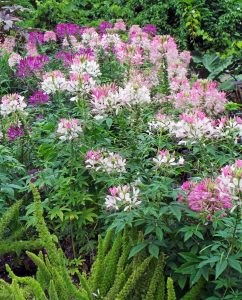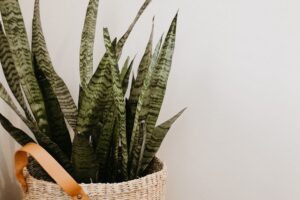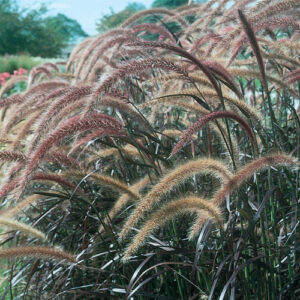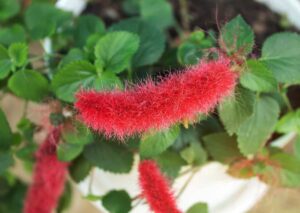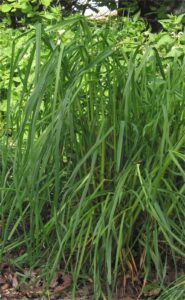Discover the Vibrant Beauty of Cleome Plant: The Must-Have Flower for Every Garden!
Cleome, also known as spider flower, is a popular annual plant that adds a touch of whimsy to any garden with its unique appearance.
The flowers have a distinctive shape that resembles spider legs, hence the common name. One of the key features of cleome plants is their ability to attract pollinators such as bees and butterflies, making them a valuable addition to any pollinator garden. Cleome plants are easy to grow from seed and prefer full sun and well-drained soil. They are drought-tolerant once established, making them a low-maintenance choice for gardeners. In addition to their ornamental value, cleome plants have been used in traditional medicine for their medicinal properties. Cleome extract is believed to have anti-inflammatory and antimicrobial effects, making it a popular ingredient in natural remedies. Overall, cleome plants are a versatile and striking addition to any garden, offering beauty, pollinator attraction, and potential health benefits. Consider adding cleome to your garden for a touch of charm and practicality.Native to South America, cleome plants are prized for their tall spiky stems topped with clusters of delicate, showy flowers in shades of pink, purple, and white..
Growing Gorgeous Cleome: The Ultimate Guide!
Growing gorgeous Cleome plants can add a stunning touch to any garden with their vibrant clusters of beautiful flowers. Known for their unique spider-like blooms, Cleome plants are relatively easy to grow and care for. Follow these tips for a successful Cleome garden: 1. Planting: Choose a sunny location with well-draining soil. Cleome plants prefer full sun but can tolerate some light shade. 2. Watering: Keep the soil consistently moist but not waterlogged. Water deeply at the base of the plant to encourage deep root growth. 3. Fertilizing: Feed Cleome plants with a balanced fertilizer every 4-6 weeks during the growing season to promote healthy growth and blooming. 4. Pruning: Deadhead spent flowers to encourage continuous blooming and remove any leggy growth to maintain a bushy appearance. 5. Pest Control: Keep an eye out for aphids and spider mites, which can sometimes be a nuisance. Use insecticidal soap as needed. By following these tips, you can enjoy a vibrant and beautiful Cleome garden that will surely impress any visitor.
Fascinating Facts About the Vibrant Cleome Plant
The Cleome plant, also known as Spider Flower, is a vibrant and striking addition to any garden. This unique plant is native to South America and belongs to the family Capparaceae. One fascinating fact about Cleome is its ability to attract beneficial insects like bees and butterflies with its showy flowers. The bright and colorful blooms come in shades of pink, purple, and white, adding a pop of color to the garden landscape. Another interesting characteristic of the Cleome plant is its distinctive foliage, consisting of deeply lobed palmate leaves that give it a tropical appearance. Cleome is also known for its rapid growth rate and can reach heights of up to 5 feet in a single growing season. This makes it an excellent choice for gardeners looking to create a bold and eye-catching display. Cleome plants are easy to grow and require minimal maintenance, making them a popular choice for beginner gardeners. They thrive in full sun and well-draining soil, but can also tolerate some shade. Furthermore, Cleome plants are drought-tolerant, making them a resilient choice for gardens in hot and dry climates. In addition to its ornamental value, Cleome has been used for medicinal purposes in traditional herbal medicine. The plant is believed to have antibacterial and anti-inflammatory properties and has been used to treat various ailments in some cultures. While not widely studied, Cleome’s potential medicinal properties make it a plant of interest in the field of natural medicine. In conclusion, the Cleome plant is a fascinating and versatile addition to any garden, with its vibrant flowers, unique foliage, and potential medicinal properties. Whether you are looking to attract pollinators, create a tropical garden oasis, or explore the plant’s healing properties, Cleome is sure to captivate and enchant both new and experienced gardeners alike.
Exploring the Diversity of Cleome Plants: A Comparison of Varieties and Characteristics
| Aspect | Information |
| —————– | ———————- |
| Scientific Name | Cleome hassleriana |
| Common Name | Spider Flower |
| Family | Cleomaceae |
| Height | 3-5 feet |
| Bloom Time | Summer to Fall |
| Sun Exposure | Full sun |
| Watering | Moderate |
| Soil Type | Well-drained soil |
FAQ
FAQs about Cleome Plant:

1. What is a Cleome plant?
– Cleome, also known as spider flower, is a flowering plant belonging to the Cleomaceae family. It is characterized by its unique spidery blooms and long stems.
2. How tall do Cleome plants grow?
– Cleome plants can grow up to 3-6 feet tall, depending on the variety and growing conditions.
3. What are the ideal growing conditions for Cleome plants?
– Cleome plants thrive in full sun and well-draining soil. They are relatively tolerant of various soil types but prefer slightly acidic soil.
4. When is the best time to plant Cleome seeds?
– Cleome seeds are best planted in early spring after the danger of frost has passed. They require warm soil to germinate.
5. How often should Cleome plants be watered?
– Cleome plants prefer regular watering, especially during hot, dry periods. Water deeply to encourage root growth but allow the soil to dry out slightly between watering.
6. Do Cleome plants require fertilization?
– Cleome plants are not heavy feeders but can benefit from a balanced, slow-release fertilizer applied during the growing season. Avoid over-fertilizing, as this can promote excessive foliage growth at the expense of flowers.
7. How do I deadhead Cleome plants?
– Deadheading, or removing spent flowers, can prolong the blooming period of Cleome plants. Simply pinch off the faded blooms at their base or use pruners for larger plants.
8. Are Cleome plants deer-resistant?
– Cleome plants are generally considered deer-resistant due to their strong scent, which deters browsing animals. However, in times of extreme hunger, deer may still nibble on Cleome plants.
9. Can Cleome plants be grown in containers?
– Cleome plants can be grown in containers, provided they have sufficient space for root development. Ensure the containers have drainage holes and water regularly to prevent the soil from drying out.
10. How do I support tall Cleome plants?
– Tall Cleome plants may require staking to prevent them from toppling over in windy conditions. Use bamboo stakes or a plant support ring to help support the stems.
- Cat Palm vs Majesty Palm: Which Should You Choose? - June 30, 2024
- Flowers That Survive Winter: Discover the Exceptional No. 5 - June 30, 2024
- The Ultimate Guide to the Growth and Care of the Black Pagoda Lipstick Plant - June 29, 2024
